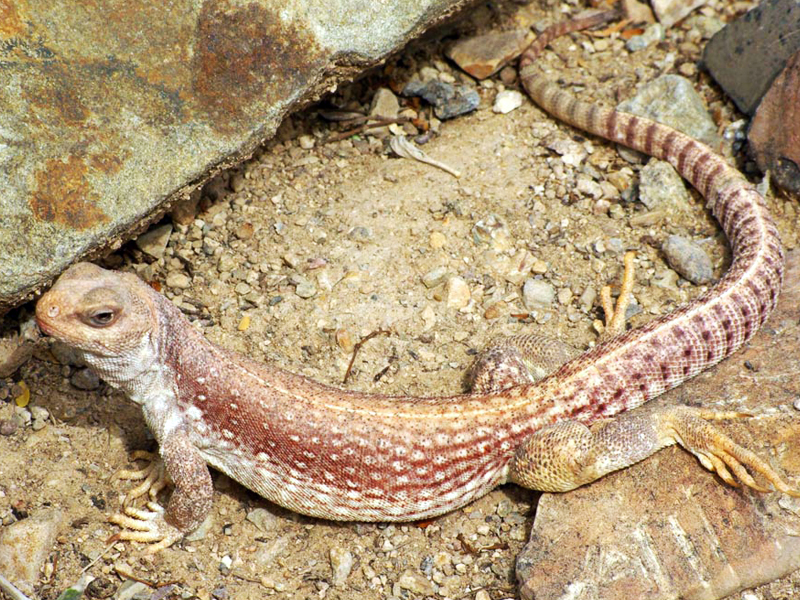Photos: Jim Rorabaugh
Iguanas in the Garden? Yes, there are. But they are not the green iguanas you might see in a zoo or pet store. Our native Desert Iguanas are pale, heat-loving lizards, up to 16 inches long including their tails. They live in the sunbaked creosote patches in the corners of the Garden where few of us venture, especially on the 100+ degree days when this gentle lizard likes to come out of its burrow to browse on desert vegetation. This species is more heat-tolerant than any other North American reptile. Possibly to avoid predators and/or to help digest all that plant material, it emerges later in the year and later in the day than other lizards and remains active longer into the hottest part of the day than other lizards. To warm up but avoid cooking, they are darker in color in the morning to absorb the sun’s heat, and very pale by early afternoon to reflect sunlight. They have enzymes that allow their body temperature to get well above lethal levels for most other vertebrates, including humans. The first part of the scientific name of the Desert Iguana (Dipsosaurus) translates to “thirsty lizard”. On a hot day with a body temperature soaring to 116 degrees, who wouldn’t be thirsty after eating all those creosote flowers and ironwood leaves?

